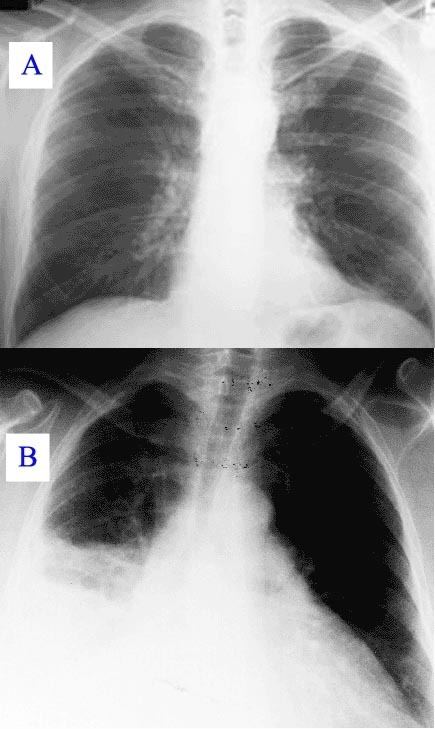DiseasesDB 10949 | ||
 | ||
A pulmonary consolidation is a region of (normally compressible) lung tissue that has filled with liquid, a condition marked by induration (swelling or hardening of normally soft tissue) of a normally aerated lung. It is considered a radiologic sign. Consolidation occurs through accumulation of inflammatory cellular exudate in the alveoli and adjoining ducts. Simply, it is defined as alveolar space that contains liquid instead of gas. The liquid can be pulmonary edema, inflammatory exudate, pus, inhaled water, or blood (from bronchial tree or hemorrhage from a pulmonary artery). It must be present to diagnose pneumonia: the signs of lobar pneumonia are characteristic and clinically referred to as consolidation.
Contents
Signs
Signs that consolidation may have occurred include:
